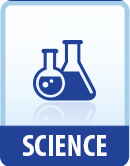|
This section contains 393 words (approx. 2 pages at 300 words per page) |
A regulatory region refers to a region of a gene to which proteins bind. The region, typically located just before the stretch of DNA that encodes the protein product of the gene, stimulates or abrogates the expression of the protein.
In a gene, transcription of DNA to messenger RNA, which in turn provides the blueprint for the manufacture of a protein, begins upon the binding of transcription molecules to the promoter. The promoter is a regulatory region, determining in a positive sense whether the particular gene is transcribed or not. Another stretch of DNA called the operator, also functions as a regulatory region, but in a negative sense. The binding of repressor molecules to the operator can prevent transcription from occurring. The enhancer also functions as a regulatory region.
Regulation of gene expression via the binding of proteins is a ubiquitous mechanism, being found throughout the eukaryotic and prokaryotic world. The so-called master, or homeotic, genes, which coordinate the expression of genes at the proper times and in the proper places in organisms ranging from the fruit fly Drosophilae to bacteria such as Escherichia coli, depend upon the existence of regulatory regions. The homeotic gene products are very similar in amino acid sequence and three-dimensional shape to regulatory proteins that bind to promoter and enhancer regions.
In eukaryotes, a sequence of nucleotides called the Hogness box, or TATA box (denoting the base sequence), is an important regulatory region. The TATA box lies some 25 bases upstream from the promoter. In prokaryotic genes the Pribnow box, or TATAAT box, plays a similar role, but it is located closer to the gene sequence, about 10 nucleotides away.
The operons of prokaryotic organisms, which have been well studied and which are classic examples of genetic regulation, operate based on regulatory regions. In the lactose operon, a repressor gene encodes a repressor protein that can bind to a specific region of the DNA called the operator. The binding of the repressor inhibits transcription of the structural genes in the operon. On another level, however, the binding of the repressor can be prevented by the occupation of the regulatory region by another molecule, termed an inducer. This is referred to as negative control. Positive control, also involving the regulatory region, exists, in response to levels of specific metabolizable compounds in the environment.
|
This section contains 393 words (approx. 2 pages at 300 words per page) |


